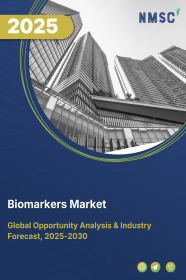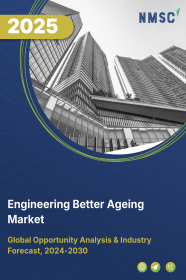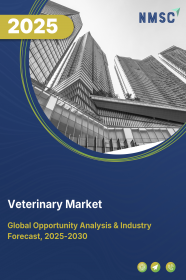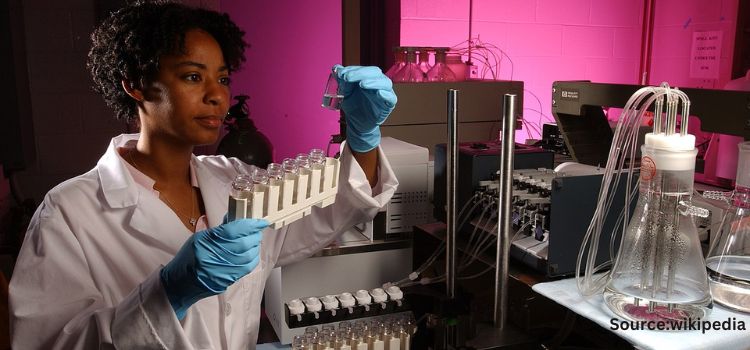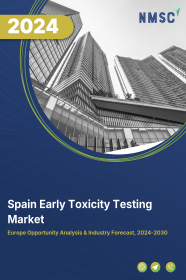
Spain Early Toxicity Testing Market by Technique (In Vivo, In Vitro, and In Silico), by Toxicity Endpoint (Genotoxicity, Dermal Toxicity, Skin Toxicity, Ocular Toxicity, Phototoxicity, and Others), by End User (Pharmaceutical Industry, Cosmetic Industry, Chemical Industry, Food Industry, and Others) – Opportunity Analysis and Industry Forecast, 2023-2030
Industry: Healthcare | Publish Date: 03-Dec-2024 | No of Pages: 93 | No. of Tables: 83 | No. of Figures: 32 | Format: PDF | Report Code : HC735
US Tariff Impact on Spain Early Toxicity Testing Market
Trump Tariffs Are Reshaping Global Business
Market Definition
The Spain Early Toxicity Testing Market was valued at USD 35.3 million in 2022, and is predicted to reach USD 99.66 million by 2030, with a CAGR of 11.8% from 2023 to 2030. Early toxicity testing serves as a crucial step in the evaluation of potential drugs, chemicals, or substances, aiming to detect and assess any harmful effects or toxicity during their initial stages of development. This assessment, usually carried out using in vitro methods or animal models, takes place before any experimentation on humans.
The primary goal of early toxicity testing is to promptly identify any safety concerns associated with a substance, enabling well-informed determinations regarding its viability for further advancement and subsequent trials. Engaging in early toxicity testing helps reduce the potential for harmful outcomes in both human participants and animals throughout clinical trials. This not only minimizes costs but also saves time in the broader course of drug development. This complex procedure involves a wide range of analyses and tests, including evaluations of cell viability, assessments of genotoxicity, and investigations into pharmacokinetics.
The specific modalities employed are contingent on the intrinsic nature of the substance under scrutiny and its intended application. Recognized as an indispensable phase within the drug development journey, early toxicity testing profoundly bolsters the assurance of safety and efficacy for novel drugs and other substances, prior to their regulatory endorsement for human utilization.
Government-Led Healthcare Advancements Fuel Market Growth in Spain
The Spanish early toxicity testing market is being driven by growth in government initiatives for the development of the healthcare sector including a universal healthcare system, increase in healthcare budget, telemedicine services, research & development, and emphasis on prevention and early detection of diseases.
For instance, according to the La Moncloa of Spain, the government announced to strengthen the country’s health system that includes increased funding for the development of medicines and vaccines, new health centers and hospitals, recruitment of more healthcare professionals, and investment in technology and infrastructure. According to a report by the Spanish Association of Medicines and Health Products (Farmaindustria), the pharmaceutical market in Spain grew by 2.8% in 2020, reaching a total value of USD 24 billion.
Escalating Research and Development Initiatives Driving Demand for Early Toxicity Testing Services in Spain
The growing research and development activities in the pharmaceuticals, cosmetics, and food sectors have generated an increased need for early toxicity testing services. This upswing is underpinned by motivations such as innovation, meeting regulatory standards, risk management, heightened consumer consciousness, and technological progress. As these industries aim to produce products that are both safer and more efficient, early toxicity testing emerges as a pivotal factor in identifying potential safety issues, maintaining compliance with regulations, fostering consumer confidence, and diminishing the potential financial and reputational hazards linked to unexpected toxic consequences
Regulatory Constraints and the Impact on Early Toxicity Testing Market Growth in Spain
The stringent regulations set by regulatory bodies such as the US FDA and the EMA require extensive and rigorous testing for drug development and safety, which can be time-consuming and expensive and restrain the growth of the Spanish early toxicity testing market. The complexity and cost of complying with these regulations can pose a significant challenge for small and medium-sized companies that may not have the resources to carry out extensive testing.
As a result, some companies may choose to delay or abandon drug development projects, which can limit demand for early toxicity testing services. Moreover, stringent regulations can also result in a lengthy approval process for new drugs, further delaying the time it takes for drugs to reach the market. This, in turn, is expected to hamper growth of the Spain early toxicity testing market.
Technological Advancements in the field of Early Toxicity Testing Market in Spain
The introduction of new technologies such as in-vitro modeling using 3D cell culture is expected to provide new lucrative opportunities for the early toxicity testing market during the forecast period. The use of 3D cell cultures can better mimic the complexity of tissues and organs, providing more accurate and reliable results for toxicity testing. Traditional 2D cell culture models are limited in their ability to mimic the complexity of human tissues and organs, often leading to inaccurate and unreliable results in toxicity testing.
However, the use of 3D cell culture models can better mimic the structural and functional complexity of tissues and organs, providing more accurate and reliable results for toxicity testing. 3D cell cultures allow the growth and interaction of multiple cell types, creating a microenvironment that more closely resembles human tissues and organs. This can better predict the toxic effects of drugs and chemicals in the human body, reducing the risk of adverse effects in clinical trials. Hence, such factors propel the early toxicity testing market growth in Spain.
Competitive Landscape
The Spain Early Toxicity Testing industry includes several market players such as Inotiv Inc., Bio-Rad Laboratories Inc, Evotec A.G., Agilent Technologies Inc., Wuxi Apptec, Bruker, Perkinelmer Inc., Enzo Biochem Inc., Danaher Corporation, Eurofins Scientific SE, Charles River Laboratories International, Inc., Labcorp Drug Development., Promega Corporation, Insphero AG., and Thermo Fisher Scientific Inc.
Key Benefits
-
The Spain Early Toxicity Testing market report provides a quantitative analysis of the market estimations throughout 2023-2030 assisting in identifying the prevailing market opportunities to capitalize on.
-
The study comprises a deep dive analysis of the current and future market trends for depicting the prevalent investment pockets in the Spain early toxicity testing industry.
-
The information related to key drivers, restraints, and opportunities and their impact on the market is provided in the report.
-
The competitive analysis of the key players along with their market share in the Spain Early Toxicity Testing market, is mentioned.
-
The SWOT analysis and Porter’s Five Forces model are elaborated on in the study.
-
Value chain analysis in the market study provides a clear picture of the stakeholders’ roles.
Spain Early Toxicity Testing Market Key Segments
By Technique
-
In Vivo
-
In Vitro
-
Cell Culture
-
PCR
-
ELISA
-
Western Blotting
-
Protein Binding Assays
-
-
In Silico
By Toxicity Endpoint
-
Genotoxicity
-
Dermal Toxicity
-
Skin Toxicity
-
Ocular Toxicity
-
Phototoxicity
-
Others
By End User
-
Pharmaceutical Industry
-
Cosmetic Industry
-
Chemical Industry
-
Food Industry
-
Others
REPORT SCOPE AND SEGMENTATION:
|
Parameters |
Details |
|
Market Size in 2022 |
USD 35.3 Million |
|
Revenue Forecast in 2030 |
USD 99.66 Million |
|
Growth Rate |
CAGR of 11.8% from 2023 to 2030 |
|
Analysis Period |
2022–2030 |
|
Base Year Considered |
2022 |
|
Forecast Period |
2023–2030 |
|
Market Size Estimation |
Million (USD) |
|
Growth Factors |
Growing research and development. Increasing government initiatives. |
|
Companies Profiled |
15 |
|
Market Share |
Available for 15 companies |
|
Customization Scope |
Free customization (equivalent up to 80 working hours of analysts) after purchase. Addition or alteration to country, regional, and segment scope. |
|
Pricing and Purchase Options |
Avail customized purchase options to meet your exact research needs. |
Key Players
-
Inotiv Inc.
-
Bio-Rad Laboratories Inc
-
Evotec A.G.
-
Agilent Technologies Inc
-
Wuxi Apptec
-
Bruker
-
Perkinelmer Inc.
-
Enzo Biochem Inc.
-
Danaher Corporation
-
Eurofins Scientific SE
-
Charles River Laboratories International, Inc.
-
Labcorp Drug Development.
-
Promega Corporation
-
Insphero AG
-
Thermo Fisher Scientific Inc.

















 Speak to Our Analyst
Speak to Our Analyst



